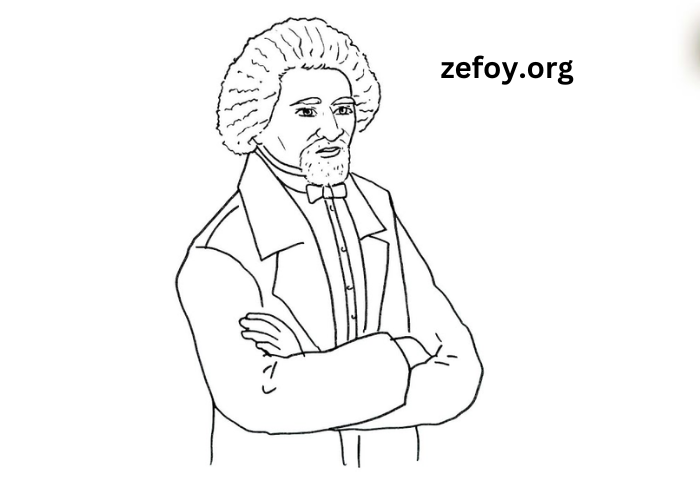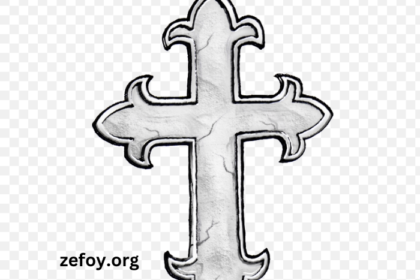Frederick Douglass stands as a towering figure in American history, embodying the struggle for freedom and equality. The term clipart:4lodwavgdfa= Frederick Douglass encompasses a collection of visuals that celebrate his legacy, making them valuable resources for educational and artistic projects.
Understanding how to effectively use clipart:4lodwavgdfa= Frederick Douglass in various contexts can enrich discussions about civil rights and the enduring fight for justice. Whether in classrooms, museums, or digital platforms, these visuals can enhance engagement and deepen understanding of Douglass’s contributions.
Who Was Frederick Douglass?
The term clipart:4lodwavgdfa= Frederick Douglass refers to the collection of images and representations related to one of America’s most prominent abolitionists and social reformers. Born into slavery around 1818, Douglass escaped to freedom and became a powerful advocate for the rights of African Americans. His eloquence and passionate speeches, alongside his influential writings, played a pivotal role in the abolitionist movement.
Douglass’s journey from bondage to becoming a leading intellectual of his time is not only remarkable but also symbolic of the larger fight for human rights. The clipart:4lodwavgdfa= Frederick Douglass collection often highlights his significant speeches, such as “What to the Slave Is the Fourth of July?” and his autobiographies, which provide firsthand accounts of the atrocities of slavery and his quest for justice.
Moreover, the imagery associated with clipart:4lodwavgdfa= Frederick Douglass often captures his commitment to education and self-improvement, values he championed throughout his life. His insistence on the power of knowledge as a means to combat oppression continues to resonate in discussions about education and equality today.
How Did Frederick Douglass Influence the Abolitionist Movement?
The influence of clipart:4lodwavgdfa= Frederick Douglass on the abolitionist movement cannot be overstated. His powerful oratory skills and written works inspired countless individuals to join the fight against slavery. Douglass became known for his ability to articulate the moral and ethical imperatives of abolition, making the case for justice in a way that appealed to both the hearts and minds of his audience.
As a prominent figure in the abolitionist movement, Douglass founded several newspapers, including the “North Star,” where he advocated for the emancipation of enslaved people and equal rights for all. His writings provided a platform for the abolitionist cause and helped shape public opinion on the issues of slavery and civil rights. The imagery associated with clipart:4lodwavgdfa= Frederick Douglass often reflects these significant contributions, showcasing his role as a leader in this vital social movement.
Additionally, Douglass’s collaborations with other abolitionists, such as William Lloyd Garrison and Sojourner Truth, underscored the collective effort needed to combat systemic oppression. The clipart:4lodwavgdfa= Frederick Douglass visuals frequently depict these partnerships, highlighting the importance of unity in social reform. His activism extended beyond abolition, encompassing women’s rights and social justice, further solidifying his legacy as a champion of equality.
What Are Some Key Works of Frederick Douglass?
The legacy of clipart:4lodwavgdfa= Frederick Douglass is preserved through several key works that document his life, thoughts, and advocacy. His autobiographies, particularly “Narrative of the Life of Frederick Douglass, an American Slave,” provide an unflinching look at the brutality of slavery and his journey to freedom. These texts are essential for understanding the historical context of his activism and the broader abolitionist movement.
In addition to his autobiographies, Douglass’s speeches have left a lasting impact on American literature and civil rights discourse. His address “What to the Slave Is the Fourth of July?” eloquently argues against the hypocrisy of a nation celebrating freedom while enslaving millions The clipart:4lodwavgdfa= Frederick Douglass collection often features excerpts from these powerful speeches, showcasing his rhetorical prowess and moral clarity.
Moreover, Douglass’s contributions to journalism through his newspapers, such as “The North Star,” demonstrate his commitment to using the written word as a tool for social change. These publications not only provided news and commentary on the abolitionist movement but also served as a platform for other activists. The imagery associated with clipart:4lodwavgdfa= Frederick Douglass often reflects his multifaceted role as a writer, speaker, and thinker in the fight for justice.
How Is clipart:4lodwavgdfa= Frederick Douglass Used in Education?
In educational settings, clipart:4lodwavgdfa= Frederick Douglass serves as a valuable resource for teaching students about American history, civil rights, and social justice. Teachers often incorporate these visuals into lesson plans, presentations, and projects to engage students and enhance their understanding of Douglass’s life and legacy. The images can help contextualize discussions about slavery, abolition, and the ongoing struggle for equality.
Using clipart:4lodwavgdfa= Frederick Douglass in the classroom allows educators to introduce complex topics in a more accessible way. Visual aids can stimulate discussions, encouraging students to think critically about the historical significance of Douglass’s work and the lessons it holds for contemporary issues. These resources foster an interactive learning environment where students can connect emotionally with the material.
Furthermore, the use of clipart:4lodwavgdfa= Frederick Douglass can inspire creative projects, such as presentations, posters, or digital media assignments. Students can analyze Douglass’s speeches and writings, using the visuals to illustrate key themes and ideas. This approach not only reinforces their understanding of the content but also nurtures their artistic and communicative skills.
What Themes Are Present in the clipart:4lodwavgdfa= Frederick Douglass Collection?
The clipart:4lodwavgdfa= Frederick Douglass collection is rich with themes that resonate deeply with social justice and human rights. One prominent theme is the struggle for freedom, as depicted in various images showcasing Douglass’s fight against slavery and oppression. These visuals often symbolize the broader quest for civil rights and equality that continues today.
Another significant theme is education and empowerment. Douglass strongly believed in the transformative power of education as a means to combat ignorance and prejudice. Many images in the clipart:4lodwavgdfa= Frederick Douglass collection illustrate his commitment to learning, reflecting his assertion that knowledge is essential for achieving liberation and justice.
Additionally, the theme of resilience and hope is prevalent throughout the clipart:4lodwavgdfa= Frederick Douglass visuals. Douglass’s life story is one of overcoming immense obstacles and advocating for a better future. This spirit of resilience is captured in the imagery, encouraging viewers to reflect on their own potential for change and activism.
Where Can You Find clipart:4lodwavgdfa= Frederick Douglass Resources?
Accessing quality resources related to clipart:4lodwavgdfa= Frederick Douglass is increasingly feasible thanks to the wealth of online platforms dedicated to historical and educational materials. Many websites specialize in providing high-quality clipart collections that focus on significant historical figures, including Douglass. These resources often include a variety of images suitable for both educational and creative purposes.
In addition to dedicated clipart websites, educational platforms and digital libraries frequently host collections featuring clipart:4lodwavgdfa= Frederick Douglass. Institutions like the Library of Congress and the National Archives often provide access to public domain images and historical documents that celebrate Douglass’s contributions. These resources are invaluable for educators, students, and researchers alike.
Moreover, social media and community organizations may share clipart:4lodwavgdfa= Frederick Douglass resources to promote awareness and engagement with his legacy. Engaging with these platforms can provide access to unique visuals, educational materials, and discussions that honor Douglass’s impact on history and society. By utilizing a variety of sources, individuals can enrich their understanding and appreciation of Douglass’s work.
How Does clipart:4lodwavgdfa= Frederick Douglass Inspire Social Change?
The imagery associated with clipart:4lodwavgdfa= Frederick Douglass serves as a powerful tool for inspiring social change. Douglass’s life and work exemplify the impact of advocacy and activism, illustrating that one voice can indeed make a difference. By utilizing these visuals in campaigns, educational initiatives, and community events, individuals can draw on Douglass’s legacy to galvanize support for contemporary social justice issues.
Moreover, the themes represented in clipart:4lodwavgdfa= Frederick Douglass imagery encourage dialogue around essential topics such as equality, human rights, and the importance of education. These discussions can empower individuals to engage with current issues, fostering a sense of responsibility and activism within communities. Douglass’s message about the power of perseverance and courage resonates strongly in today’s social climate.
Finally, the use of clipart:4lodwavgdfa= Frederick Douglass in social media campaigns and awareness initiatives can amplify the call for justice and equality. By sharing images and messages inspired by Douglass, advocates can reach wider audiences and promote a shared understanding of the ongoing fight for civil rights. This capacity for connection and mobilization reflects the enduring relevance of Douglass’s work in shaping social movements today.
Conclusion
In conclusion, the term clipart:4lodwavgdfa= Frederick Douglass represents a vital resource for exploring the legacy of a remarkable figure in American history. From his influential writings to his powerful speeches, Douglass’s contributions continue to resonate in discussions about justice, equality, and civil rights. By understanding the significance, applications, and best practices related to clipart:4lodwavgdfa= Frederick Douglass, individuals can honor his legacy while inspiring future generations to continue the fight for social change. As visual content plays an increasingly important role in education and advocacy, embracing the imagery of Douglass will be essential for creating impactful narratives that celebrate his enduring influence.




